0805 resistor is fundamental components use in electrical and electronic circuits. Resistors can limit the current flow, divide voltage, or provide a desired resistance. This surface-mount device (SMD) size is compact, reliable, and suitable for a wide range of applications. From consumer electronics to automotive and industrial circuits.
In this article, we will know key information of the 0805 chip resistor. Its dimensions, resistance values, tolerance, footprint, and power rating. We will also answer some FAQs to help clarify any doubts we might have.
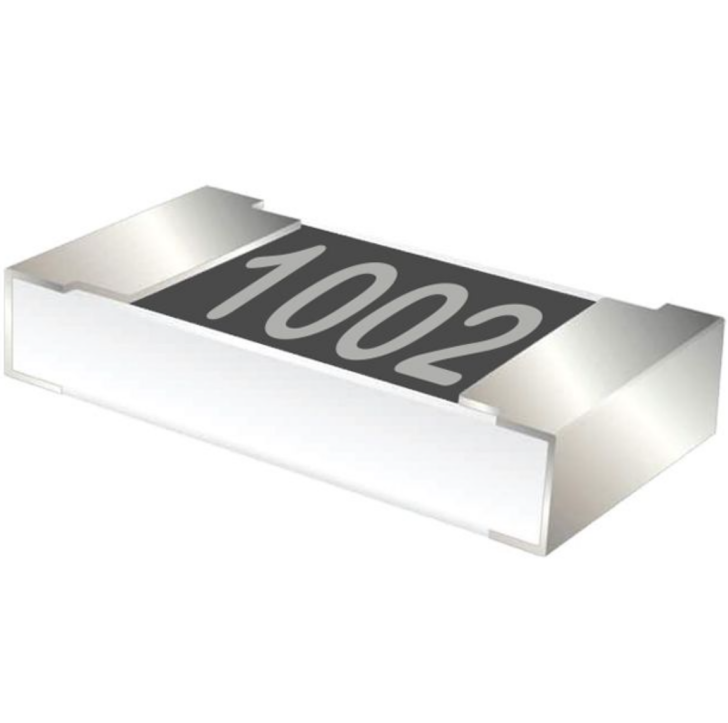
1. 0805 resistor dimensions
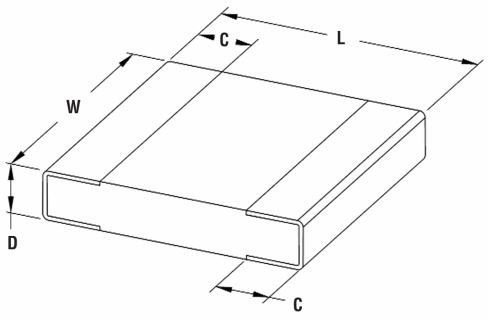
L | W | C | D |
2.00±0.1 | 1.20±0.1 | 0.35±0.25 | 0.50±0.15 |
It refers to the physical sizes of the component. The 0805 designation comes from its dimensions in inches.
· Length: 0.08 inches (2.0 mm)
· Width: 0.05 inches (1.25 mm)
· Height: Typically about 0.02 inches (0.5 mm)
In the metric system, it's a compact and relatively small component. This size is extremely efficient in allowing designers to pack a large number of components onto a PCB, while also maintaining low weight and small footprint. The small sizes makes it particularly useful in high-density circuit boards. Such as the PCB in mobile phones, tablets, laptops, and other portable electronic devices.
2. 0805 Resistor Values
Follow the E24 (Standard Values) and E96(Precision Values) standard series. They cover a wide range of values.
Resistance | ||||||
1Ω | 1.02Ω | 1.03Ω | 1.05Ω | 1.06Ω | 1.08Ω | 1.1Ω |
1.12Ω | 1.13Ω | 1.15Ω | 1.16Ω | 1.18Ω | 1.2Ω | 1.22Ω |
1.24Ω | 1.25Ω | 1.26Ω | 1.28Ω | 1.3Ω | 1.32Ω | 1.34Ω |
1.36Ω | 1.37Ω | 1.39Ω | 1.4Ω | 1.42Ω | 1.44Ω | 1.45Ω |
1.47Ω | 1.5Ω | 1.51Ω | 1.53Ω | 1.54Ω | 1.56Ω | 1.57Ω |
1.58Ω | 1.6Ω | 1.62Ω | 1.64Ω | 1.65Ω | 1.67Ω | 1.69Ω |
1.7Ω | 1.72Ω | 1.74Ω | 1.75Ω | 1.77Ω | 1.8Ω | 1.82Ω |
1.83Ω | 1.84Ω | 1.86Ω | 1.88Ω | 1.9Ω | 1.91Ω | 1.92Ω |
1.94Ω | 1.96Ω | 1.98Ω | 2Ω | 2.02Ω | 2.04Ω | 2.05Ω |
2.06Ω | 2.08Ω | 2.1Ω | 2.12Ω | 2.15Ω | 2.18Ω | 2.2Ω |
2.23Ω | 2.24Ω | 2.26Ω | 2.28Ω | 2.3Ω | 2.32Ω | 2.34Ω |
2.36Ω | 2.37Ω | 2.39Ω | 2.41Ω | 2.43Ω | 2.44Ω | 2.46Ω |
2.49Ω | 2.51Ω | 2.53Ω | 2.55Ω | 2.57Ω | 2.59Ω | 2.61Ω |
2.62Ω | 2.64Ω | 2.67Ω | 2.7Ω | 2.73Ω | 2.75Ω | 2.77Ω |
2.8Ω | 2.82Ω | 2.84Ω | 2.87Ω | 2.9Ω | 2.93Ω | 2.95Ω |
2.97Ω | 3Ω | 3.02Ω | 3.04Ω | 3.06Ω | 3.09Ω | 3.12Ω |
3.15Ω | 3.18Ω | 3.2Ω | 3.23Ω | 3.26Ω | 3.3Ω | 3.33Ω |
3.36Ω | 3.39Ω | 3.42Ω | 3.45Ω | 3.49Ω | 3.51Ω | 3.54Ω |
3.57Ω | 3.6Ω | 3.63Ω | 3.66Ω | 3.69Ω | 3.74Ω | 3.77Ω |
3.8Ω | 3.83Ω | 3.87Ω | 3.9Ω | 3.94Ω | 3.98Ω | 4Ω |
4.03Ω | 4.07Ω | 4.1Ω | 4.14Ω | 4.18Ω | 4.22Ω | 4.25Ω |
4.3Ω | 4.34Ω | 4.39Ω | 4.43Ω | 4.47Ω | 4.51Ω | 4.56Ω |
4.7Ω | 4.75Ω | 4.82Ω | 4.87Ω | 4.91Ω | 4.96Ω | 5Ω |
5.06Ω | 5.1Ω | 5.15Ω | 5.21Ω | 5.26Ω | 5.3Ω | 5.36Ω |
5.43Ω | 5.49Ω | 5.56Ω | 5.62Ω | 5.68Ω | 5.75Ω | 5.82Ω |
5.91Ω | 6Ω | 6.1Ω | 6.19Ω | 6.28Ω | 6.39Ω | 6.49Ω |
6.56Ω | 6.68Ω | 6.8Ω | 6.92Ω | 7Ω | 7.12Ω | 7.22Ω |
7.32Ω | 7.47Ω | 7.56Ω | 7.68Ω | 7.87Ω | 8Ω | 8.12Ω |
8.25Ω | 8.56Ω | 8.68Ω | 8.91Ω | 9Ω | 9.12Ω | 9.53Ω |
9.76Ω | 10Ω | 10.2Ω | 10.3Ω | 10.5Ω | 10.7Ω | 11Ω |
11.3Ω | 11.5Ω | 12Ω | 12.1Ω | 12.4Ω | 12.7Ω | 13Ω |
13.3Ω | 13.7Ω | 14Ω | 14.3Ω | 14.7Ω | 15Ω | 15.4Ω |
15.7Ω | 16Ω | 16.3Ω | 16.8Ω | 17Ω | 17.4Ω | 17.8Ω |
18Ω | 18.5Ω | 19Ω | 19.4Ω | 19.6Ω | 20Ω | 20.5Ω |
21Ω | 22Ω | 22.6Ω | 23Ω | 24Ω | 24.9Ω | 25.1Ω |
26Ω | 27Ω | 27.4Ω | 28Ω | 29Ω | 29.4Ω | 30Ω |
Resistance | ||||||
33Ω | 36Ω | 39Ω | 43Ω | 47Ω | 51Ω | |
56Ω | 62Ω | 68Ω | 75Ω | 82Ω | 91Ω | 100Ω |
110Ω | 120Ω | 130Ω | 150Ω | 160Ω | 180Ω | 200Ω |
220Ω | 240Ω | 270Ω | 300Ω | 330Ω | 360Ω | 390Ω |
430Ω | 470Ω | 510Ω | 560Ω | 620Ω | 680Ω | 750Ω |
820Ω | 910Ω | 1kΩ | 1.1kΩ | 1.2kΩ | 1.3kΩ | 1.5kΩ |
1.6kΩ | 1.8kΩ | 2kΩ | 2.2kΩ | 2.4kΩ | 2.7kΩ | 3kΩ |
3.3kΩ | 3.6kΩ | 3.9kΩ | 4.3kΩ | 4.7kΩ | 5.1kΩ | 5.6kΩ |
6.2kΩ | 6.8kΩ | 7.5kΩ | 8.2kΩ | 9.1kΩ | 0805 10k resistor | 11kΩ |
12kΩ | 13kΩ | 15kΩ | 16kΩ | 18kΩ | 20kΩ | 22kΩ |
24kΩ | 27kΩ | 30kΩ | 33kΩ | 36kΩ | 39kΩ | 43kΩ |
47kΩ | 51kΩ | 56kΩ | 62kΩ | 68kΩ | 75kΩ | 82kΩ |
91kΩ | 100kΩ | 110kΩ | 120kΩ | 130kΩ | 150kΩ | 160kΩ |
180kΩ | 200kΩ | 220kΩ | 240kΩ | 270kΩ | 300kΩ | 330kΩ |
360kΩ | 390kΩ | 430kΩ | 470kΩ | 510kΩ | 560kΩ | 620kΩ |
680kΩ | 750kΩ | 820kΩ | 910kΩ | 1MΩ | 1.1MΩ | 1.2MΩ |
1.3MΩ | 1.5MΩ | 1.6MΩ | 1.8MΩ | 2MΩ | 2.2MΩ | 2.4MΩ |
2.7MΩ | 3MΩ | 3.3MΩ | 3.6MΩ | 3.9MΩ | 4.3MΩ | 4.7MΩ |
5.1MΩ | 5.6MΩ | 6.2MΩ | 6.8MΩ | 7.5MΩ | 8.2MΩ | 9.1MΩ |
10MΩ | 11MΩ | 12MΩ | 13MΩ | 15MΩ | 16MΩ | 18MΩ |
20MΩ | 22MΩ | 24MΩ | 27MΩ | 30MΩ | 33MΩ | 36MΩ |
39MΩ | 43MΩ | 47MΩ | 51MΩ | 56MΩ | 62MΩ | 68MΩ |
75MΩ | 82MΩ | 91MΩ | 100MΩ | 110MΩ | 120MΩ | 130MΩ |
150MΩ | 160MΩ | 180MΩ | 200MΩ | 220MΩ | 240MΩ | 270MΩ |
300MΩ | 330MΩ | 360MΩ | 390MΩ | 430MΩ | 470MΩ | 510MΩ |
560MΩ | 620MΩ | 680MΩ | 750MΩ | 820MΩ | 910MΩ | 1GΩ |
1.1GΩ | 1.2GΩ | 1.3GΩ | 1.5GΩ | 1.6GΩ | 1.8GΩ | 2GΩ |
These values can meet various needs in different industries. Depending on the required precision and cost constraints.
3. 0805 Resistors Tolerance
Allowable deviation from the nominal value. It express as a percentage of the resistor's stated value and indicates how much the resistance could vary from the nominal value. The tolerance levels commonly are:
· 5% (E24).
· 2% (E48).
· 1% (E96).
· ±0.01%, ±0.05%, ±0.1%, ±0.25%, ±0.5%, ±30%, Jumper
The tolerance rating is a factor to consider when choosing a resistor for a specific application and precision.
4. 0805 resistor footprint
Recommended Pad Layout
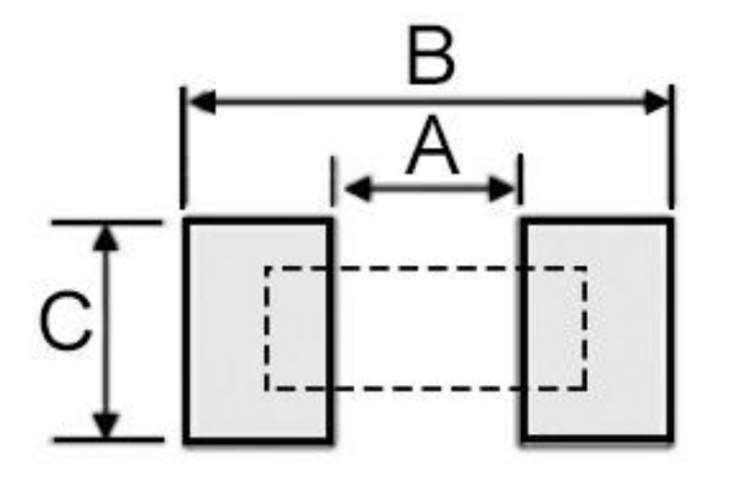
A | B | C | |
Size in mm | 1.2 | 3.00 | 1.30 |
5. 0805 resistor power rating
It indicates how much electrical power it can safely dissipate without damage or overheat.
· 0.125W (125mW): This is the standard power ratings for 0805 SMD resistors.
0.02W | 0.06W | 0.1W (1/10W) | 0.125W (1/8W) | 0.15W |
0.175W | 0.2W (1/5W) | 0.25W (1/4W) | 0.26W | 0.3W |
0.333W (1/3W) | 0.4W | 0.4W (2/5W) | 0.63W (5/8W) | 0.66W |
0.75W | 0.75W (3/4W) | 1W | 2W | 3W |
5W | 8W | 0.5W (1/2W) |
We need to choose an appropriate power rating to ensure the resistor operates within safe limits. If the resistor dissipates more power than its rated capacity, it can overheat, leading to failure. When design, must calculate the power dissipation in their circuits using Ohm’s Law (P = V² / R) and select resistors with suitable power ratings.
6.0805 Resistor Markings

The SMD chip resistor usually follow a 3-digit or 4-digit code that represents the resistance value in ohms. Here's how it works:
3-Digit Code:
· First two digits: These represent the first part of the resistance value (the first two significant digits).
· Third digit: This is the multiplier (power of 10) to scale the first two digits.
Example:
· 100 → 10 × 10⁰ = 10 ohms
· 220 → 22 × 10⁰ = 22 ohms
· 470 → 47 × 10⁰ = 47 ohms
· 682 → 68 × 10² = 6,800 ohms or 6.8 kΩ
4-Digit Code (for higher resistance values):
· The first three digits represent the value.
· The last digit is the multiplier.
Example:
· 1001 → 100 × 10¹ = 1,000 ohms or 1 kΩ
· 4701 → 470 × 10¹ = 4,700 ohms or 4.7 kΩ
· 1002 → 100 × 10² = 10,000 ohms or 10 kΩ
FAQs
1. What size is a 0805 resistor?
2.0 mm (length) x 1.25 mm (width). The "0805" designation refers to its size in inches, which translates to 0.08 inches x 0.05 inches.
2. How much power can a 0805 resistor handle?
The normally power rating is 0.125 watts (125 milliwatts). This means that the resistor can safely dissipate up to 125mW of electrical power. Exceeding this rating may result in the resistor overheating, potentially causing it to fail or damage.
3. What is the code for 510 resistor?
51 ohms resistor= 510 markings
This is based on the following:
· The first two digits (51) represent the value 51.
· The third digit (0) is the multiplier, indicating no additional zeros, so it's simply 51 ohms.
In this case, the resistor has a value of 51 ohms and the code would be 510.
For an 0805 resistor, you would likely see this code printed on the resistor's surface for easy identification, along with any tolerance and temperature coefficient marking.
Conclusion
Understanding the dimensions, value, tolerance, footprint, and power rating of the 0805 SMD resistor can help us for selecting the right resistor for any specific application. By considering these factors, we can ensure reliable and efficient circuit performance when design.
HOT NEWS
What is 10k Ohm Resistor?

10k resistor 10k resistor color code
2025-05-14
The 0402 Resistor: A Comprehensive Guide
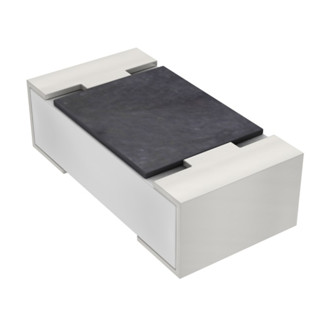
0402 Resistor
2025-05-06
120 Ohm Resistor- Specifications, Applications, and Features
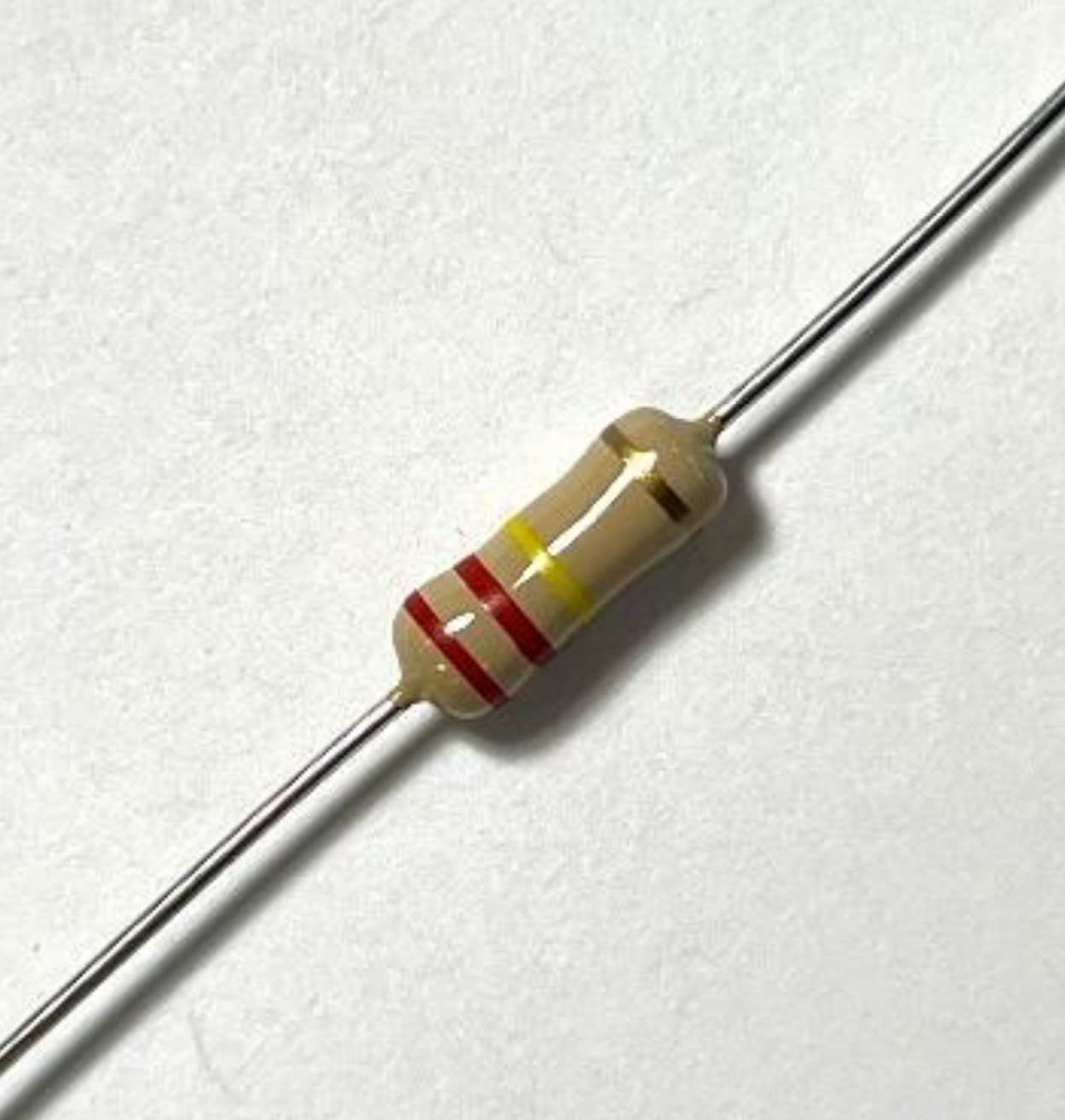
2025-05-12
Everything You Need To Know About ARE1309 Relay

2025-04-23
What is 100 Ohm Resistor And Color Code?
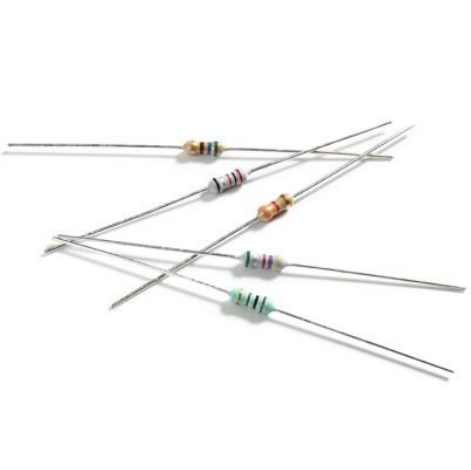
100 ohm resistor color code
2025-05-17
What Is The 1K Ohm Resistor?
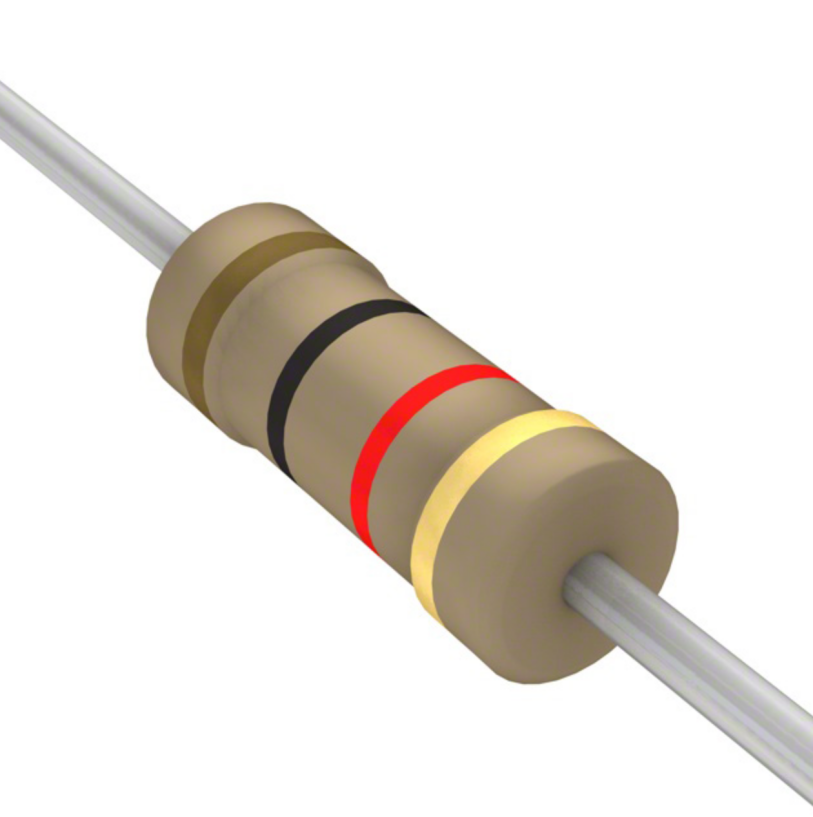
1k ohm resistor and color code
2025-05-21
What Is A 0201 Resistor?
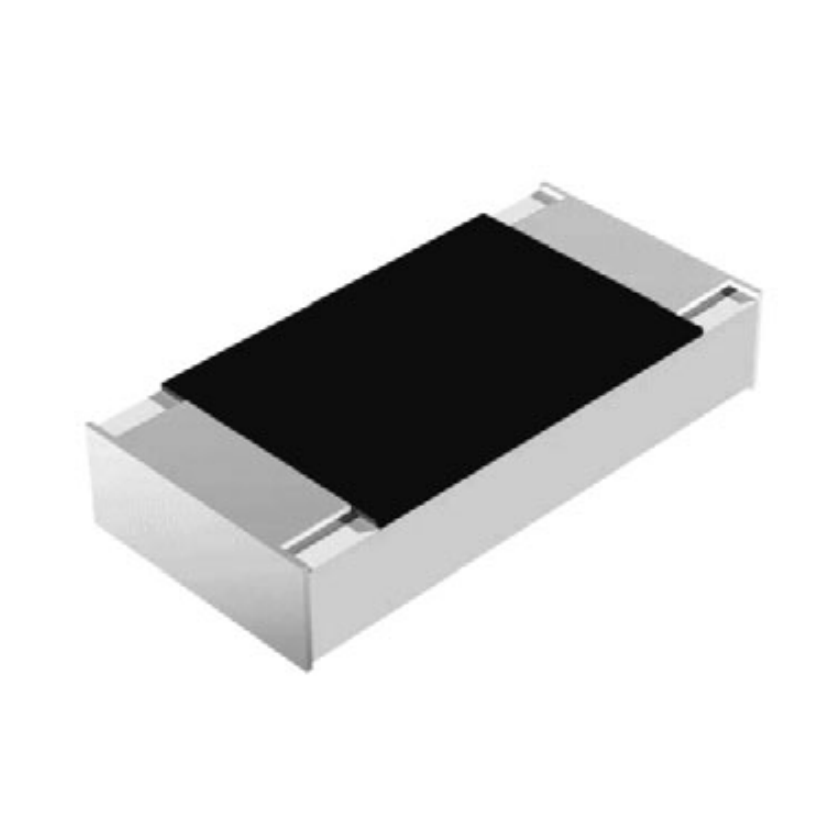
0201 Resistor dimensions, footprint,values
2025-05-24
Understanding A 0603 Resistor
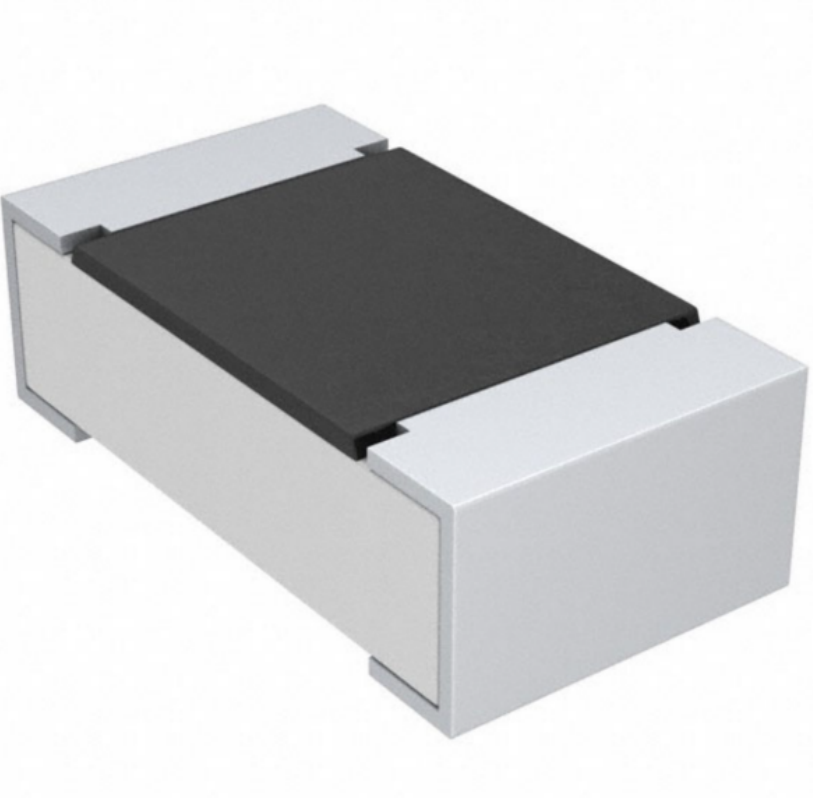
0603 resistor,dimensions,marking code, values
2025-05-29
What Is The 0805 Resistor?

0805 Resistor, dimensions, value, tolerance, footprint
2025-05-31











 Product Catalog
Product Catalog





